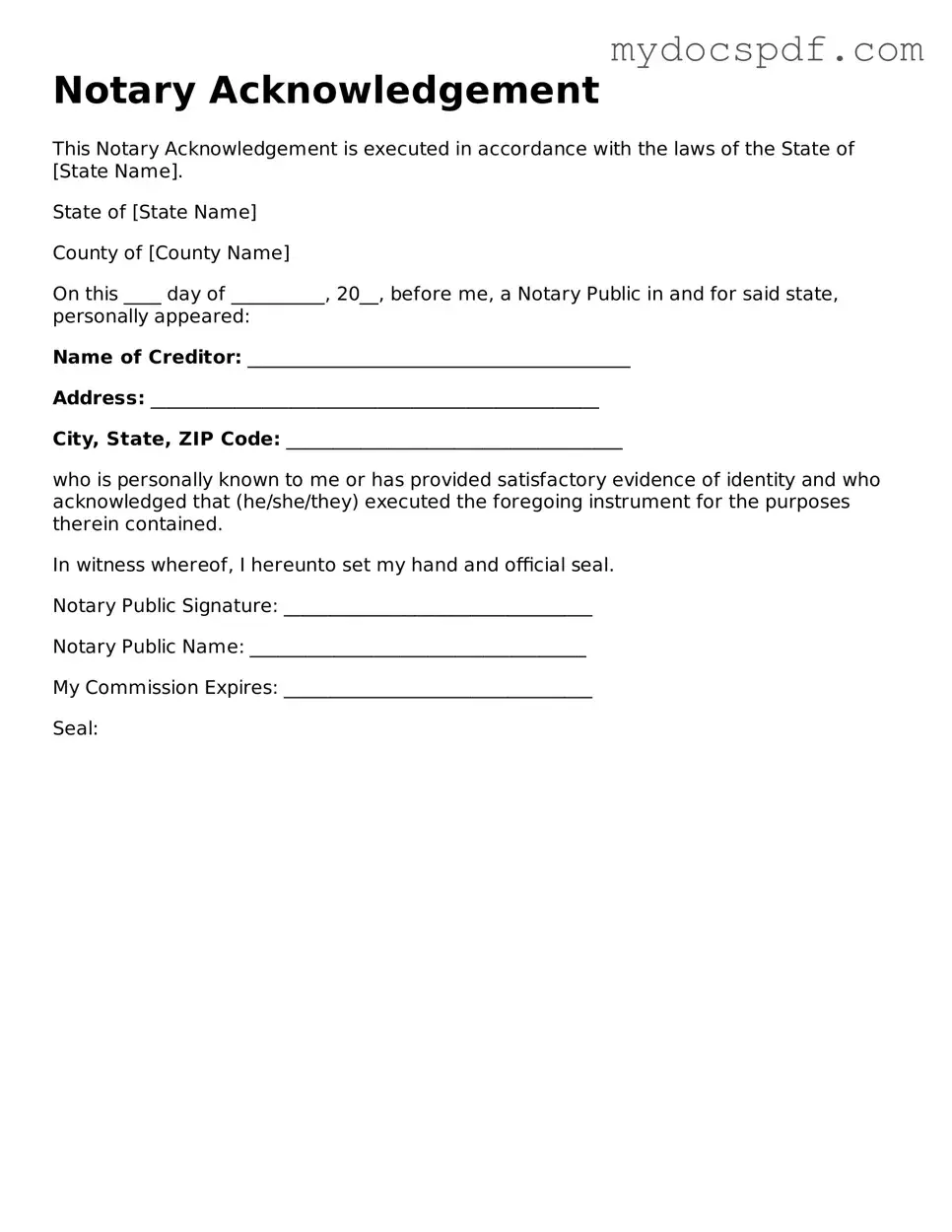Attorney-Approved Notary Acknowledgement Template
A Notary Acknowledgement form is a legal document used to confirm that a signature on a document was made in the presence of a notary public. This form serves to verify the identity of the signer and the voluntary nature of the signature. Understanding its importance can help ensure that your documents are legally valid and accepted.
Access Editor Here
